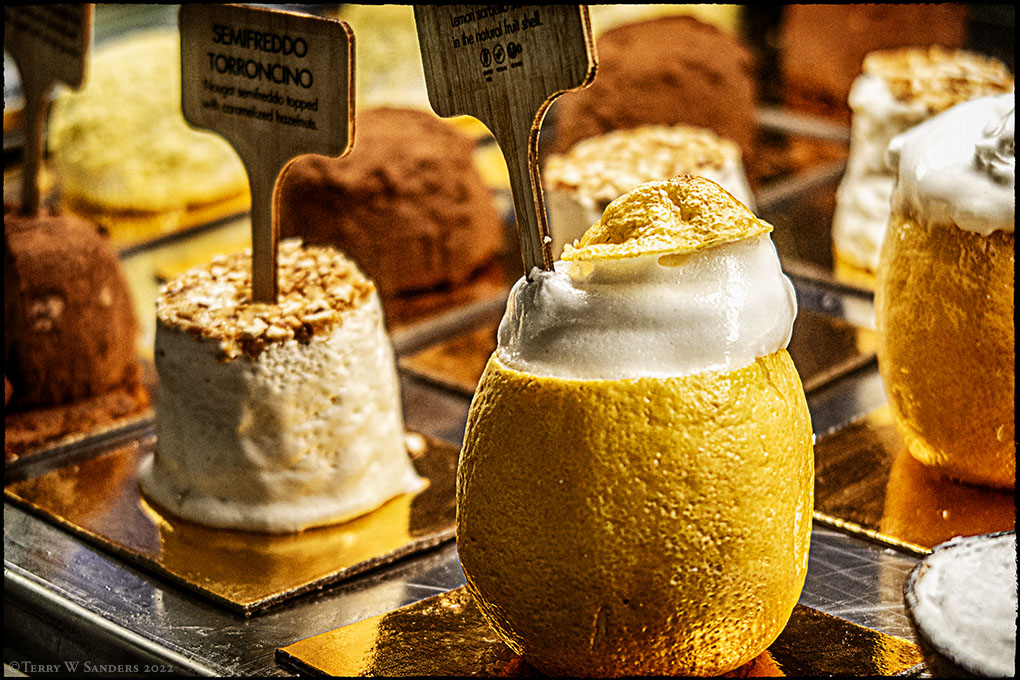When the last bomb had exploded at the end of the World War II, and Italy was looking to the future with hope again, a Tuscan restaurateur who had arrived in Milan with his family decided to open a pastry shop on Via Larga.
In 1946, Attilio Bindi had a clear idea in his head: he wanted to produce high-quality pastries and offer them to the restaurant industry. There was a crucial need for it, and he understood that need right away.
The small pastry shop kept expanding until eventually it grew into a factory. Bindi was famous for his ability to produce cakes and pastries of unprecedented quality and deliciousness. He delivered to the best restaurants in Milan and did so by whizzing around the city on a bicycle.
A long time has passed since those days, and also from when Bindi decided to expand into the U.S., now 30 years ago.
Today, if you’re walking in Manhattan, between 44th Street and Madison Avenue, you can find a large single-brand pop-up. There are many desserts on the menu, but the star is gelato.

“Why is that?”, I ask Alberto Paderi, president and CEO of Bindi North America for five years now. “Because it’s a product that represents Italy,” he answers, “Americans identify it very much as an Italian dessert and it’s perfect for having a direct contact with the consumer”.
On the counter, in addition to the traditional flavors ready to be put on a cone or in a cup, there are also filled fruits, bomboloni, affogati and single portions. “These for example,” he says, pointing to glass flutes filled with gelato, “are very popular in restaurants”.
It’s easy to believe him. For a restaurant patron, ordering gelato at the end of a meal and being served a glass that is pleasing to the eye certainly has a different effect than a plastic package or a scoop on a plate.
“We also serve restaurants to solve another problem,” Paderi continues, “which is the lack of staff. In the kitchens, in addition to the famous shortage of servers, there is also a shortage of pastry chefs, so for a restaurateur to have the desserts ready-made and to have them of quality is a great advantage.”
“When we make deliveries, there are stretches where our truck has to stop every fifty feet, because we may be serving all the restaurants on the street.”
Then again, it’s not surprising: in the city’s metropolitan area Bindi serves about 2,000 outlets. “And we also have a delivery service,” Paderi adds. An option that began with the arrival of the pandemic and which, following the general trend, has not been discontinued since.

The company has decided to follow a strategy of innovation: to not stop at the classic products that are always popular, but to go with the trends that are making their way into gastronomy. “Now we also have products that are gluten-free, vegan, or with reduced amounts of sugar,” he says.
This also includes “Instagrammable” desserts, such as the new pastry chef line designed for elite restaurants. “They are a reinterpretation of Italian tradition. We decided to give a new shape to the great classics, such as tiramisu or grandma’s cake.”
This is because, in Bindi’s work, there is never a lack of Made in Italy authenticity, which they are able to bring even into ethnic restaurants. “Tiramisu is liked all over the world,” Paderi recalls, “and so we prepare it, not only for Italian restaurants, but also for the French, Asian or American”. It’s a way to spread Italian culture and products also through cooking.
“In the last five years we doubled our business volume in the United States,” Paderi says proudly, “and we managed to do it despite the pandemic”.
Bindi has thus become, even in New York, a model to follow and a reference point for the pastry world while always keeping the bar high.












